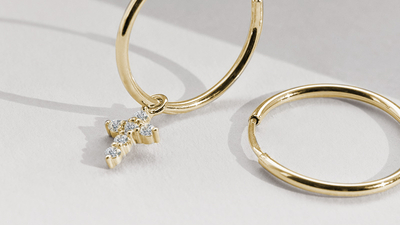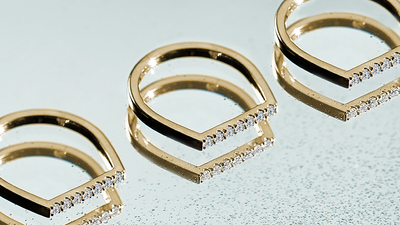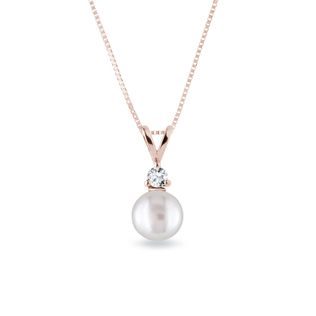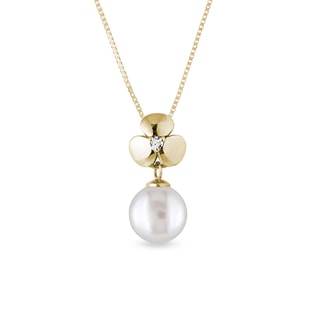Pendant with Pearl in White Gold
Inventive necklace combining different shades of white fine: natural freshwater pearls, clear and brilliant 14k white gold. Jewel interestingly combines and shapes. Shamrock and flower in it underscores the simple round pearl.
This necklace with a pearl pendant is handcrafted at the KLENOTA jewelry studio. It comes in a standard length of 16.5 inches (42 cm unless otherwise stated). We will deliver the jewelry to you in an elegant gift box along with a Certificate of Authenticity. Find out more about the types and lengths of chains in our guide.
Availability: in stock & ready to ship.
| CODE | K0635022 |
| Material |
White Gold fineness 14 karat 585/1000 |
| Gemstone |
Diamond Origin natural cut round clarity SI color G diameter 1.7 mm weight 0.02 ct |
| Pearls |
freshwater shape round color white quality AAA diameter 7.5-8.0 mm |
| length | 420.00 mm |
| weight | 2.50 g |
Jewelry from the KLENOTA ATELIER
Located in the very heart of the Old Town of Prague, our atelier and workshop draws inspiration from the centuries of local goldsmithing traditions to create timeless yet modern jewelry. Each piece is handcrafted to perfection by our skilled artisans, using only high quality materials from verified sources so you can cherish our jewelry for years to come. Discover the true meaning of elegance with KLENOTA.
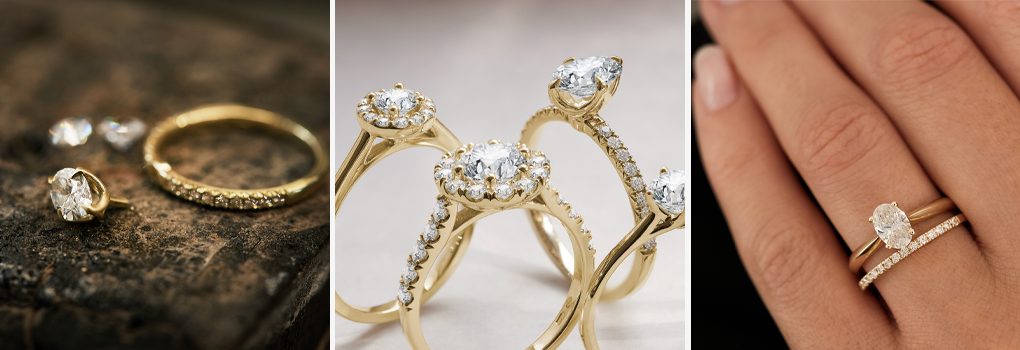
Pearl jewelry
Pearls are organic in origin, making them different from most other gemstones. They are formed inside the shells of marine and freshwater molluscan bivalves. On the Mohs scale of hardness, they have a value of 2.5-4.5.
TYPES OF PEARLS:
Freshwater pearls are cultivated in freshwater farms. Freshwater pearls come in a variety of sizes and shapes (round, oval, baroque). Freshwater pearls are usually pure white.
Akoya pearls can be found in China, Vietnam and Japan. They grow to a size of 5-9 mm depending on the water temperature. Akoya pearls tend to be pure white with warm highlights. They are round.
Tahitian pearls come from French Polynesia, where they are cultivated by a special kind of oyster. Tahitian pearls are dark gray-green with a metallic luster and are round.
South Sea pearls are found in Australia, Myanmar and Indonesia. These pearls are white to honey gold and rarely also have a pink, green or blue tinge. They range in size from 10-20 mm and are round.
VALUE: The value of pearls is based on how regular their shape is (except for baroque pearls), their luster, the smoothness of their surface, as well as their size. The surface and luster of a pearl ranges from AAA to B, with AAA being the highest quality. The price also increases with size (the size is listed as the diameter of the pearl in mm).
CARE: Pearl jewelry benefits from contact with the skin, so frequent wear is desirable however their surface is very delicate. Avoid contact with cosmetic products (perfumes, hairsprays and creams). Don’t wear them to the pool, sauna or sea and clean them with a soft, damp cloth.

Diamond jewelry
In the process of evaluating and certifying diamonds, they are assessed based on four fundamental parameters which are called the 4Cs: cut, clarity, color, and carat. These four properties then significantly influence the price of a diamond.
CUT: The right cut gives a diamond its radiant luster. The most popular cut is a round one known as the brilliant cut. Diamonds can also be cut into a wide array of “fantasy” cuts which include the marquise, baguette, heart, teardrop, oval, and princess (a three-sided or four-sided cut with sharp corners which is especially popular for engagement rings).
CLARITY: Clarity is determined by the number, size, and distribution of any inclusions (internal impurities) in a diamond:
- IF (Internally Flawless) – clear diamonds without any inclusions,
- VVS 1, VVS 2 (Very Very Slightly Included) – diamonds with very small inclusions,
- VS 1, VS 2 (Very Slightly Included) – diamonds with small inclusions,
- SI 1, SI 2 (Slightly Included) – diamonds with inclusions which can be seen with a magnifying glass,
- I1, I2, I3 (Included), also labeled as “P” in the Czech Republic – diamonds with medium to larger inclusions visible to the naked eye.
COLOR: The color of colorless to yellow diamonds is evaluated based on an international scale:
- D to F – colorless diamonds;
- G to J – near colorless diamonds;
- K to M – diamonds with a touch of yellow;
- N to Z – diamonds with a brown-yellow color.
Other colors of diamonds are simply called fancy. Some of our color diamonds are treated to enhance their color.
CARAT: The weight of diamonds is quoted in carats (ct), expressed to two decimal places, for example 0.25 ct. One (1) ct is equal to 0.2 grams. With earrings and jewelry which has multiple diamonds, we always state the total number of carats of all the diamonds.




